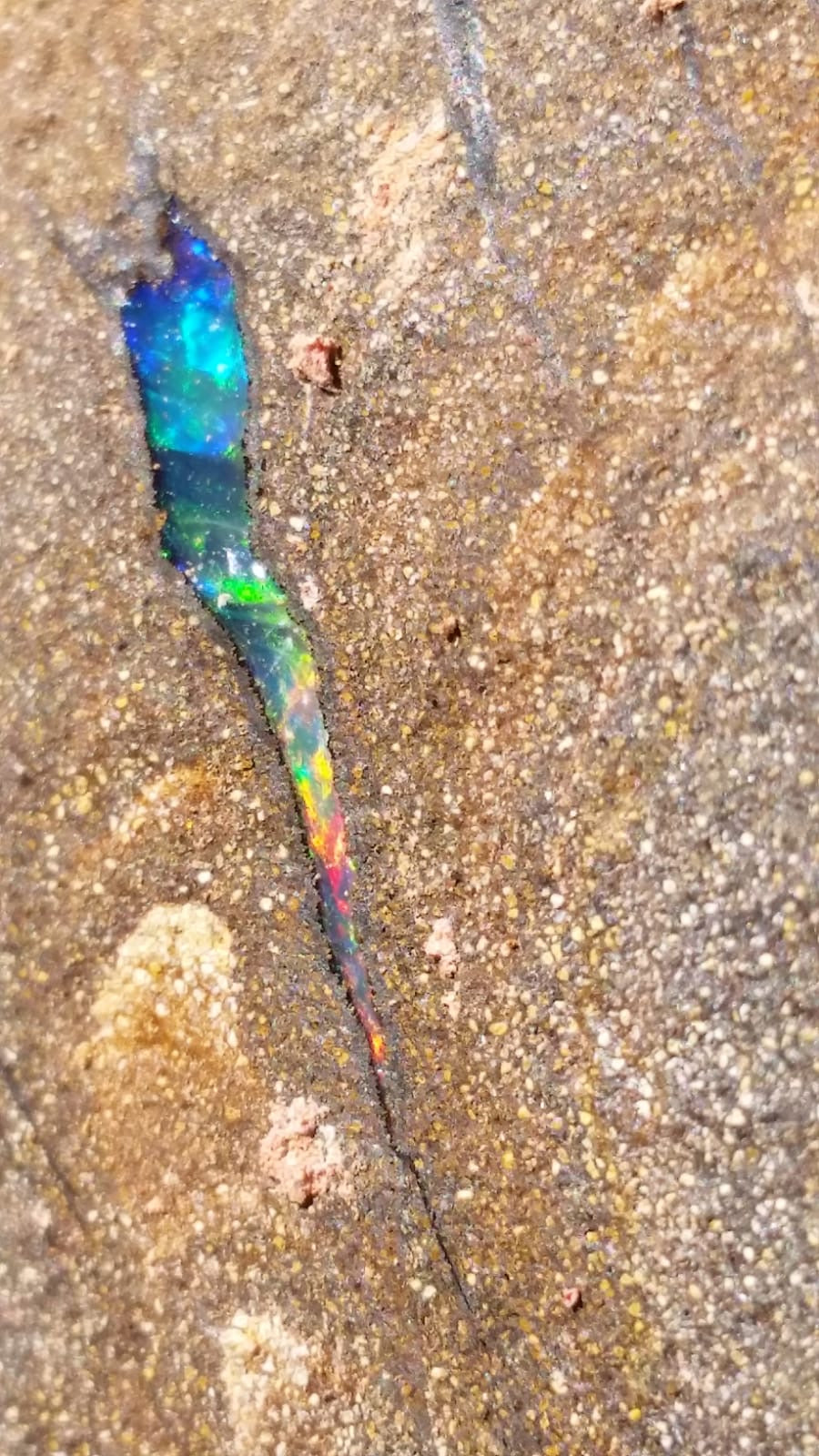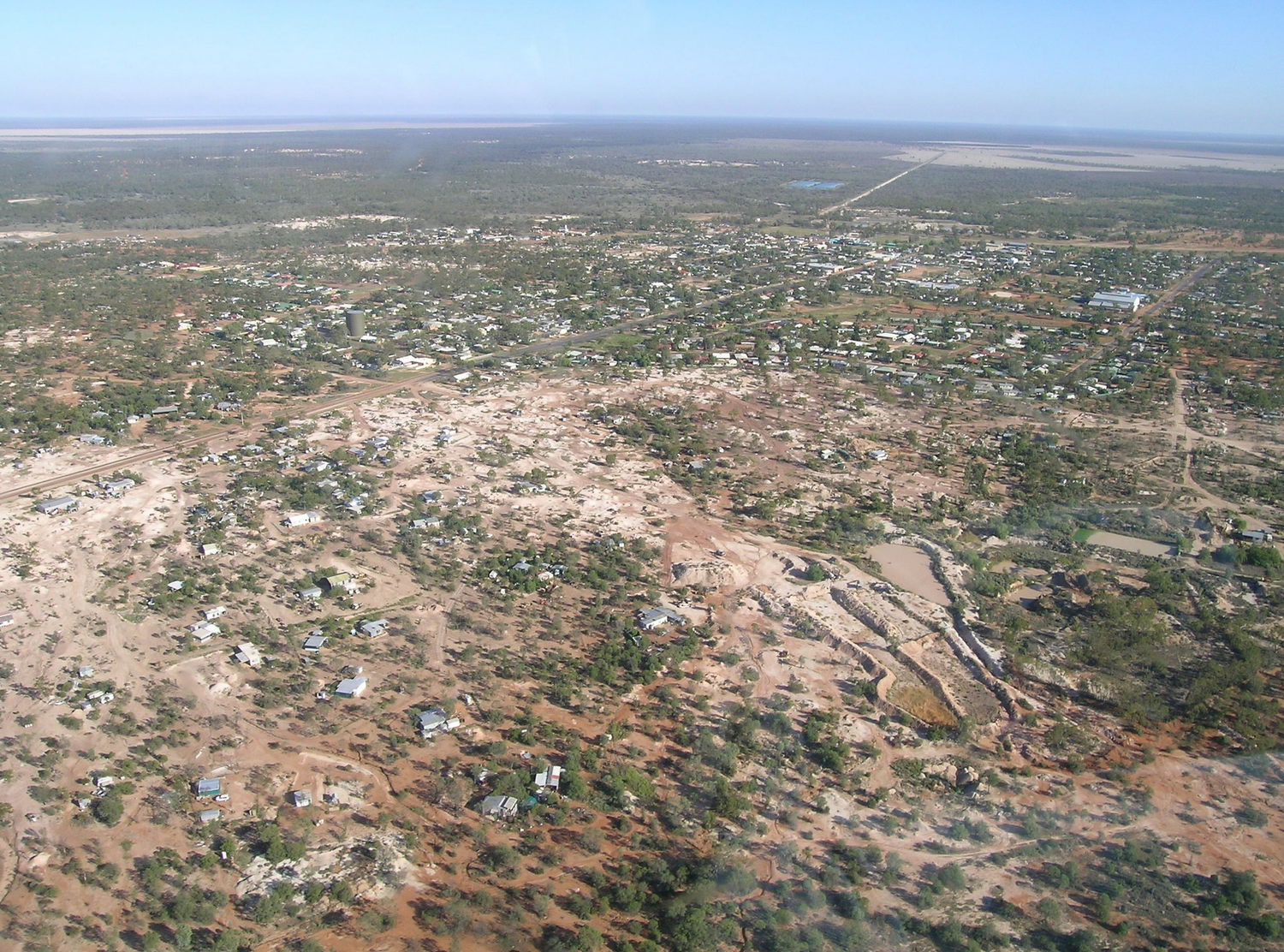What is the difference between black opal and boulder opal?
-
We get this question all the time about Australian opals and we know it can be confusing! So let start with two basis questions: 1) What is a boulder opal? and 2) What is a black opal?

What is boulder opal?
Boulder opal is defined as natural opal that occurs in 'veins' or 'pockets' in sedimentary ironstone or sandstone boulders (see image). Boulder opals are only found in one part of the world - Queensland, Australia.
Based on its background or body tone, you can have black boulder opal, dark boulder opal and light (milky) boulder opal. When you cut and polish boulder opals, you leave the host rock as part of the opal gemstone. These typically have a flat, undulating or slightly domed surface (depending on how the opal vein runs through the host rock).
In summary black boulder opals 1) have a dark or black body tone, 2) contain sedimentary host rock as part of the gemstone and 3) typically have a flat or undulating surface.

What is black opal?
A common definition of black opal is precious opal from the Lightning Ridge opal fields in northern New South Wales, Australia (see image). Black opals have also been found in Mintabie in South Australia. To be called a black opal, the gemstone should have a black to semi-dark background or body tone.
Black opals from New South Wales form in either 'nobbies' (nodules of opal) or 'seams' (horizontal deposits of opal) in sedimentary host rock (sandstone or conglomerates). When cutting a black opal, often a natural layer of potch (colourless opal) is left on the back of the stone, which can give the stone a darker body tone. However all the host rock is removed. Therefore black opals are defined as 'natural opal that is found in one piece where the opal is in its natural state and is of substantially homogenous chemical composition.'
In summary black opals 1) have a dark or black body tone, 2) contain no sedimentary host rock, 3) may or may not have a potch base and 4) are typically cut into cabochons. Points 2-4 are what makes them different to black boulder opals (see above).
-
Take home message
When it comes to vibrant opal colours on a black background or body tone, there is no differences between black opals from the opal fields of Lightning Ridge in New South Wales or black boulder opals from the opal fields in Queensland. Both types of Australian opals can contain the full spectrum of colours, amazing colour play and impressive brilliance, all aided by a black background / body tone.
The difference is that precious black opal gemstone will have a higher dome shape or cabochon cut (with no host rock as part of the gemstone) and precious black boulder opal gemstones will be a flatter cut (with the host rock as part of the gemstone). One is not better than the other - they are just from different opal mining fields in Australia. So it really just depends on personal taste!
